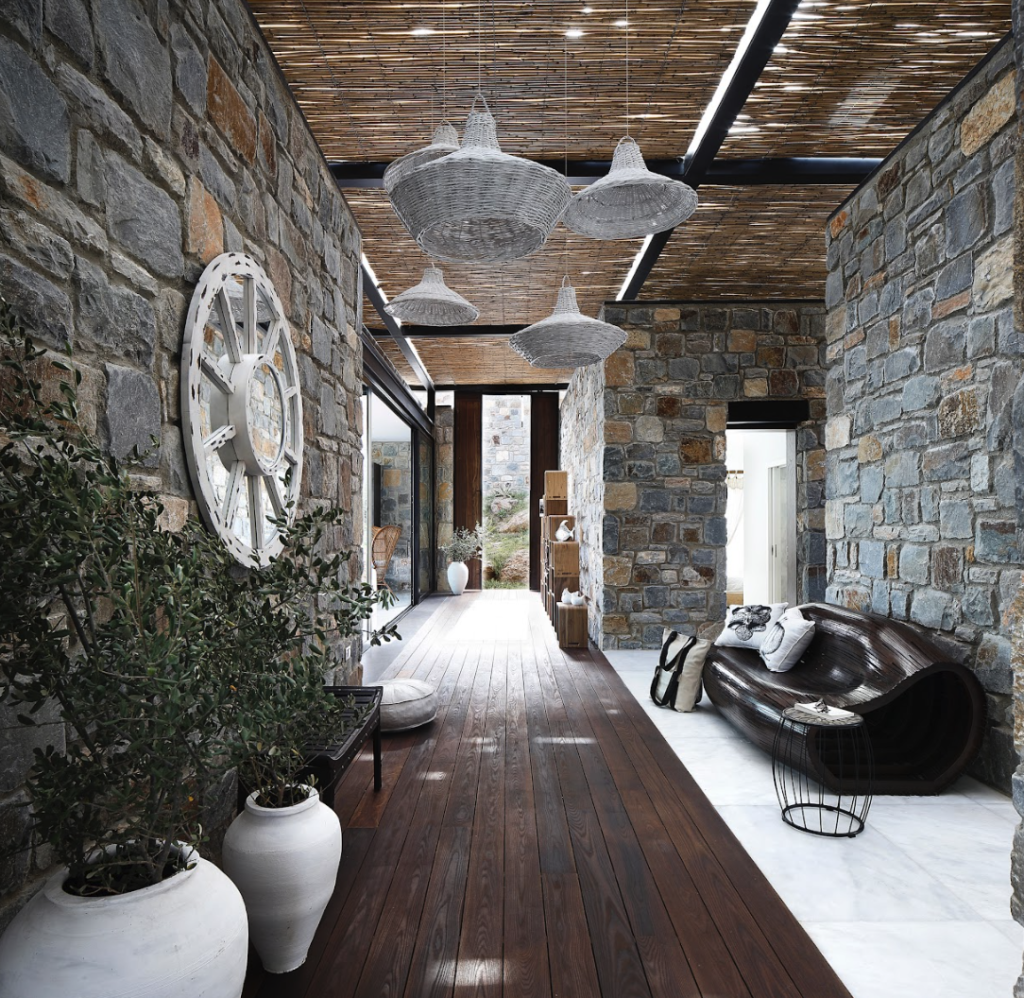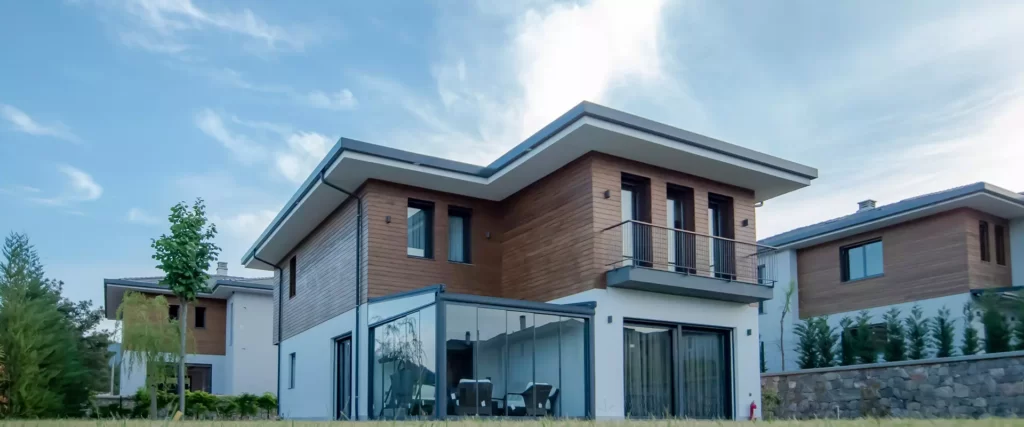Thermally modified wood flooring combines durability, eco-friendliness, and aesthetic appeal. By subjecting wood to high temperatures, the thermal modification process transforms the material into one highly resistant to decay, moisture, and insects, while maintaining a chemical-free, eco-friendly composition.
This innovative material is an ideal solution for both indoor and porch flooring, providing longevity and environmental benefits without sacrificing style.
Benefits of Thermally Modified Wood Flooring
Thermally modified wood is a highly durable and eco-friendly option for homeowners seeking long-lasting and sustainable flooring solutions. The heat treatment process enhances the wood’s resistance to decay, moisture, and insects, while also preserving its rich natural beauty. This makes thermally modified wood an excellent choice for both interior and exterior flooring, offering stability, low maintenance, and a range of design possibilities.
Durability and Moisture Resistance
Thermally modified wood stands out for its ability to resist rot and insects, making it well-suited for high-traffic areas and moisture-prone environments such as kitchens, bathrooms, and porches. This treatment ensures the wood remains stable and long-lasting, offering homeowners a durable flooring solution with minimal upkeep.
Dimensional Stability
Thermally modified wood’s reduced moisture content ensures minimal warping, shrinking, or cracking, even in environments with fluctuating humidity. Its reliability makes it a smart choice for both indoor and outdoor flooring. Whether for humid coastal areas or dry climates, this wood maintains its integrity over time.
Aesthetic Appeal
The thermal modification process provides a rich, uniform color throughout the wood, ranging from warm browns to a silver patina as it ages. This deep color remains consistent even if the wood is scratched, offering both aesthetic flexibility and durability for a range of interior designs.
Sustainability and Eco-Friendliness
For those prioritizing sustainability, thermally modified wood is a top choice. The process uses only heat and steam—no chemicals—making it a safer option for both homes and the environment. Additionally, many thermally modified wood products are sourced from sustainably managed forests, further reducing their environmental impact.
Understanding how thermally modified wood is made provides valuable insight into why it offers superior durability, stability, and sustainability compared to untreated wood.
How Thermally Modified Wood is Made
The process used to modify wood involves several steps that transform the material’s structure, providing it with enhanced durability and resistance.
Heating and Structural Changes
- Wood is heated to temperatures between 356°F and 446°F in a low-oxygen environment, which prevents combustion and alters the wood’s cellular structure.
- This heat treatment removes hemicellulose, a compound that typically absorbs moisture and contributes to wood decay.
Moisture and Decay Resistance
- By removing hemicellulose, the wood becomes significantly more resistant to:
- Moisture: Reduced susceptibility to swelling or warping.
- Decay: Protection against fungi and other decay-inducing factors.
- Insects: Resistance to insect damage, adding to its longevity.
Common Wood Species
Thermal modification is used with several wood species, each offering distinct strengths:
- Ash: Known for its strength and durability, ideal for flooring.
- Pine: A popular choice for its aesthetic appeal and versatility.
- Oak: Valued for its hardness and resistance, making it perfect for high-traffic areas.
With its unique properties, thermally modified wood is well-suited for a range of flooring applications, providing both practical performance and visual appeal in various environments.
Uses for Thermally Modified Wood in Flooring

Thermally modified wood is an ideal choice for a variety of flooring applications, offering both durability and aesthetic appeal in indoor and outdoor settings.
Indoor Flooring
Thermally modified wood is an excellent choice for indoor spaces, providing enhanced performance in areas such as living rooms, kitchens, and bathrooms. Its moisture resistance ensures durability, even in rooms where temperature and humidity fluctuate.
Porch and Outdoor Flooring
Thermally modified wood’s resistance to decay, moisture, and insects makes it a perfect choice for outdoor flooring applications like porches and decks. Its ability to endure exposure to the elements ensures long-lasting performance with minimal maintenance.
Proper installation and routine maintenance are key to ensuring that thermally modified wood flooring retains its beauty and performance for years to come.
Installation and Maintenance Tips
Following proper installation techniques and maintaining thermally modified wood flooring are essential to maximizing its lifespan and ensuring lasting performance.
Key Considerations for Installation
For the best results, thermally modified wood flooring should be acclimated to the room’s environment before installation. Allow the wood to sit for 72 hours to adjust to the temperature and humidity. Preparing a clean, level subfloor is also important for a smooth installation. Follow manufacturer guidelines on tools and techniques to ensure the wood’s longevity.
Maintenance Guidelines
Thermally modified wood is relatively easy to maintain compared to untreated wood. Regular sweeping or vacuuming, combined with periodic cleaning using a damp mop and mild cleaner, helps keep the flooring in top condition. For outdoor applications, using UV-protective oils will help preserve the wood’s color and protect it from fading.
When comparing thermally modified wood to other flooring materials, its unique benefits stand out in terms of durability, eco-friendliness, and long-term performance.
Comparison: Thermally Modified Wood vs. Other Flooring Materials
When evaluating thermally modified wood against other flooring materials, its superior moisture resistance, sustainability, and long-term durability offer clear advantages.
Traditional Hardwood
Traditional hardwood is prone to warping and moisture damage over time, especially in humid environments. Thermally modified wood, by contrast, retains its shape and integrity thanks to its lower moisture content, making it a superior long-term option for various environments.
Composite Flooring
While composite flooring is marketed as a low-maintenance option, it lacks the sustainability of thermally modified wood. Composite materials are often made with petroleum-based plastics, which are not as environmentally friendly. Thermally modified wood provides a more natural, eco-conscious alternative.
Environmental factors play a significant role in the appeal of thermally modified wood, particularly for those seeking sustainable and eco-friendly building materials.
Environmental Considerations
Thermally modified wood represents a major step forward in sustainable building materials.
- The heat treatment process eliminates the need for chemicals, making it both eco-friendly and safe.
- With its extended lifespan and reduced maintenance requirements, thermally modified wood is an excellent choice for reducing environmental impact.
By opting for this material, builders and homeowners can align their projects with modern sustainability standards.
Selecting Thermally Modified Wood Flooring

Choosing thermally modified wood for flooring involves balancing factors like durability, moisture resistance, and sustainability. Ash, pine, and oak each offer unique benefits suited to different projects.Learn more about thermally modified wood options here to find the best fit for your flooring needs.

